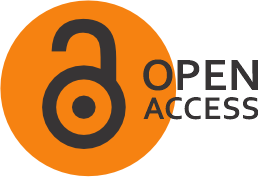Optimizing Educational Facilities and Infrastructure for Enhanced Learning at Jeneponto State Islamic Senior High School

Published online: 18 Jun 2025
Abstract
Purpose-This study aims to explore how managing educational facilities and infrastructure helps improve the quality of education at MAN Jeneponto. Proper management is important because it affects the learning process and the achievement of educational goals.
Research Methodology / Design / Approach- The study uses a descriptive qualitative approach. Data were collected through direct observation, interviews with the Principal, Deputy Head of Facilities and Infrastructure, and teachers, as well as related documents. The data were analyzed by reducing information, organizing it systematically, and drawing conclusions based on the findings.
Findings-This study found that the management of facilities and infrastructure at MAN Jeneponto follows proper procedures, including planning, procurement, distribution, asset inventory, maintenance, and disposal of unusable items. The school’s education quality is considered very good based on eight national education standards. However, limited funding is a major challenge in managing facilities and infrastructure.
Originality and Value-This study highlights the importance of managing infrastructure as a key factor in improving education quality at state religious high schools like MAN Jeneponto. The findings can guide other institutions to better manage their physical resources to support teaching and learning, even with budget limitations.
References
[1] S. Salahuddin, M. Akos, and A. Hermawan, “Meningkatkan Mutu Pendidikan melalui Sumber Daya Manusia dan Sarana Prasarana di MTsn Banjar Selatan 2 Kota Banjarmasin,” Administraus, vol. 2, no. 1, pp. 1–14, 2018.
[2] M. I. Dacholfany, “Inisiasi strategi manajemen lembaga pendidikan Islam dalam meningkatkan mutu sumber daya manusia islami di Indonesia dalam menghadapi era globalisasi,” At-Tajdid: Jurnal Pendidikan dan Pemikiran Islam, vol. 1, no. 01, 2017. DOI: https://doi.org/10.24127/att.v1i01.330
[3] F. Ashadi, “Pengembangan sumberdaya manusia dalam lembaga pendidikan anak usia dini,” Jurnal Pembelajaran Fisika, vol. 5, no. 4, pp. 412–418, 2017.
[4] N. I. Okeke and C. C. Okaforcha, “Towards Effective Management of University Education in Nigeria,” Unizik Journal of Educational Laws and Leadership Studies, vol. 1, no. 1, 2025.
[5] U. O. R. Enes, L. Asha, and D. Wanto, “Optimization of Facilities and Infrastructure Management in Improving the Quality of Learning at Madrasah Ibtidaiyah,” Kharisma: Jurnal Administrasi Dan Manajemen Pendidikan, vol. 3, no. 2, pp. 149–160, 2024. DOI: https://doi.org/10.59373/kharisma.v3i2.54
[6] R. Husni, E. J. Saputri, N. Khasanah, and W. Hariati, “Analisis Sarana Dan Prasarana Terhadap Minat Belajar Siswa Di MTSN 6 Padang Pariaman,” AL-MARSUS: Jurnal Manajemen Pendidikan Islam, vol. 2, no. 1, pp. 1–11, 2024. DOI: https://doi.org/10.30983/al-marsus.v2i1.7592
[7] R. Fernández, J. F. Correal, D. D’Ayala, and A. L. Medaglia, “A decision-making framework for school infrastructure improvement programs,” Structure and Infrastructure Engineering, vol. 21, no. 2, pp. 165–184, 2025. DOI: https://doi.org/10.1080/15732479.2023.2199361
[8] S. Ben Gurion, M. P. Tampubolon, and M. Limbong, “The Influence of Teacher Competency and Educational Infrastructure on the Quality of Junior High School Education in the Cikarang Utara District,” 2024.
[9] A. Latif and D. Darmawan, “Examining How School Environment and Teacher Competence Affect Student Learning Motivation at MA Al Fatich Tambak Osowilangun Surabaya,” Teaching and Learning Journal of Mandalika (Teacher) e-ISSN 2721-9666, vol. 5, no. 1, pp. 69–75, 2024.
[10] S. A. Pisriwati, Y. Hardi, and D. H. Siswanto, “Enhancing organizational development through principal leadership to improve teacher and staff work discipline,” Journal of Organizational and Human Resource Development Strategies, vol. 1, no. 01, pp. 52–62, 2024.
[11] M. Nicmanis, “Reflexive content analysis: An approach to qualitative data analysis, reduction, and description,” Int J Qual Methods, vol. 23, p. 16094069241236604, 2024. DOI: https://doi.org/10.1177/16094069241236603
[12] M. F. Mukhdlor, A. R. Syam, and M. A. Syahri, “Evaluasi implementasi kurikulum merdeka menggunakan CIPP,” Jurnal Pendidikan Guru Sekolah Dasar, vol. 1, no. 3, p. 9, 2024. DOI: https://doi.org/10.47134/pgsd.v1i3.567
[13] M. H. Fatoni and J. Subando, “The important role of learning evaluation for improving the quality of Islamic education: A literature study,” Jurnal Penelitian Pendidikan Islam, vol. 12, no. 2, pp. 223–240, 2024.
License
Copyright (c) 2025 The Author(s). Published by Borneo Novelty Publishing

This work is licensed under a Creative Commons Attribution 4.0 International License.
Permission is granted subject to the terms of the License under which the work was published. Permission will be required if your reuse is not covered by the terms of the License.

